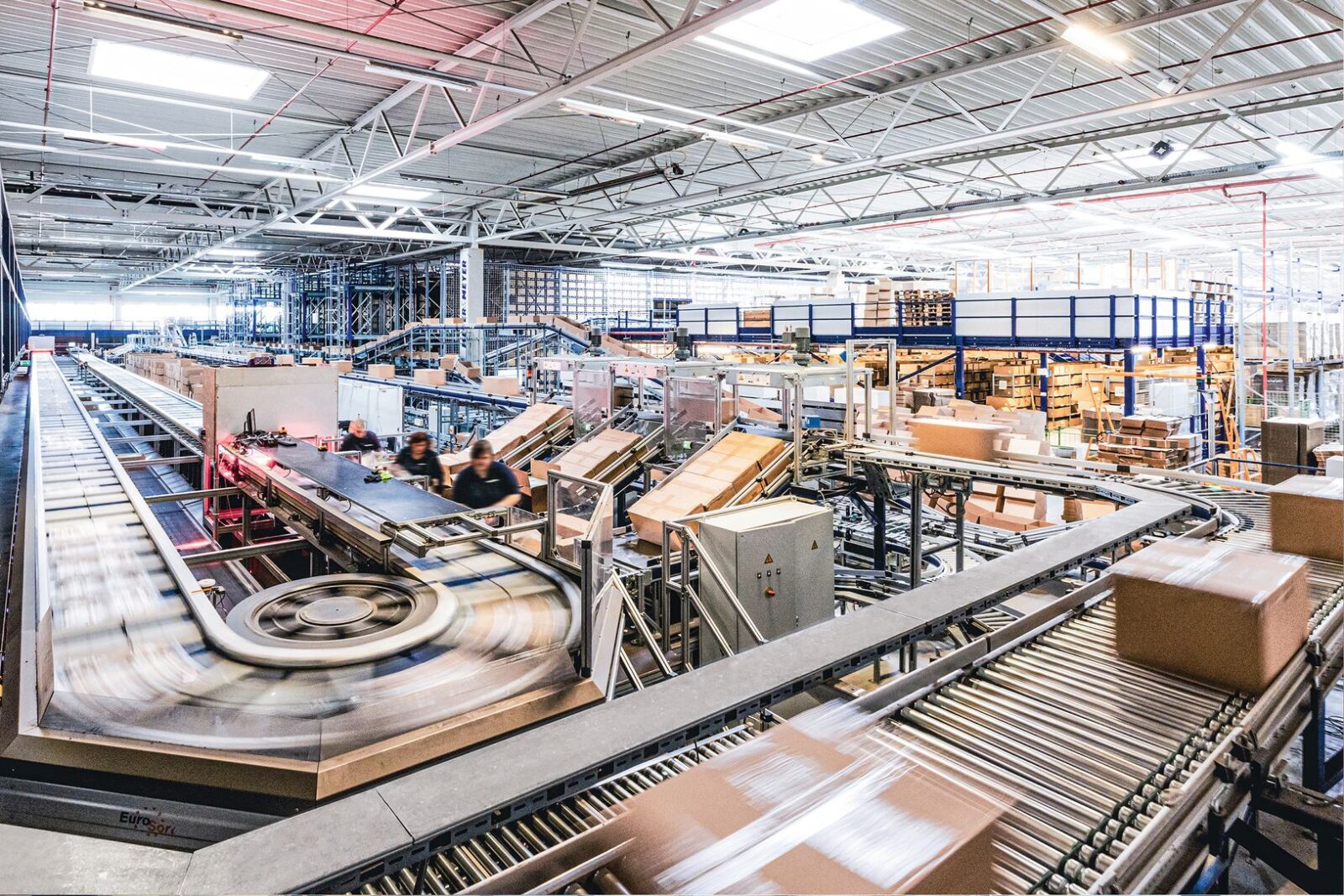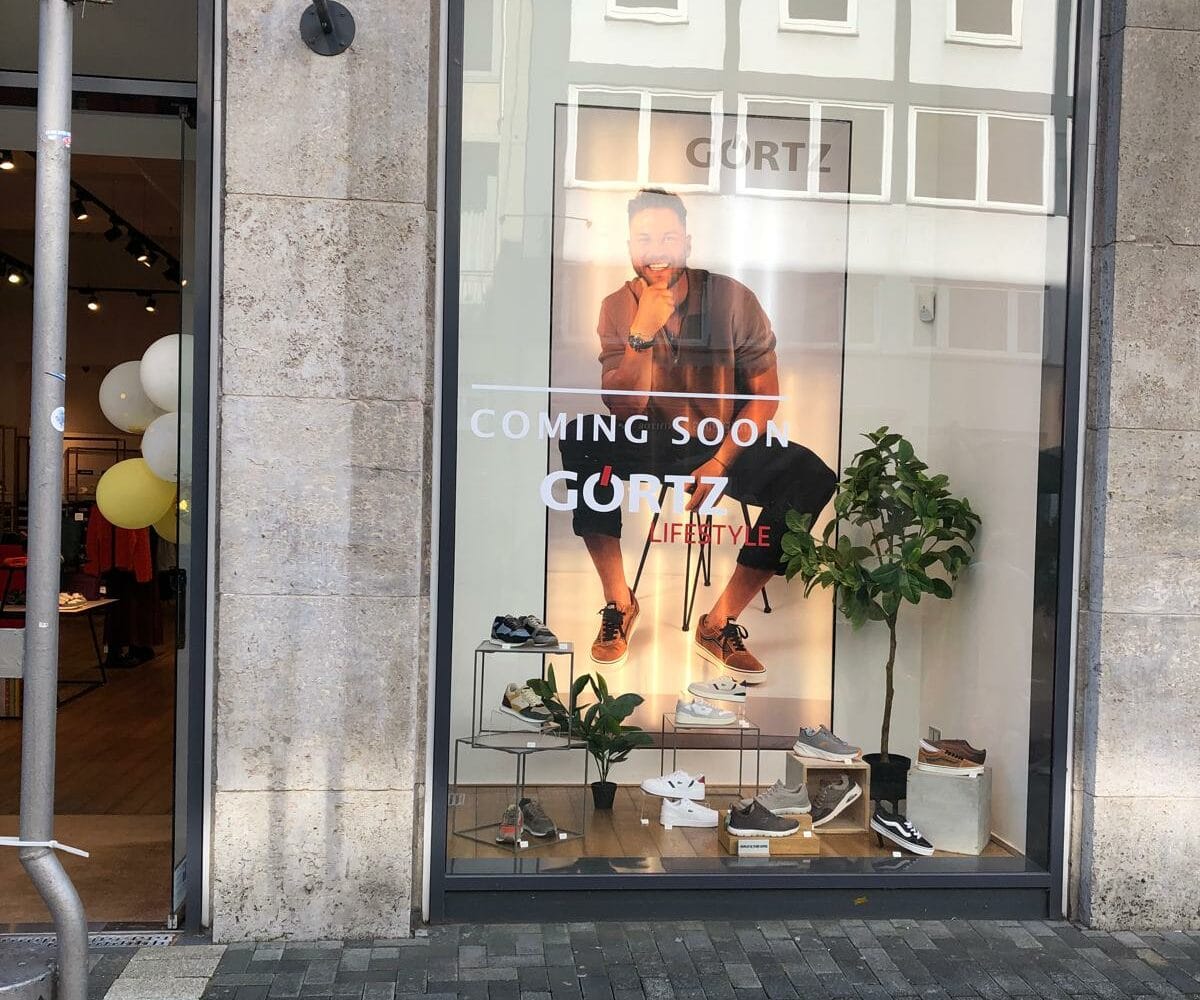With the issue of NOS, deliveries are becoming increasingly small and it is often no longer worthwhile to send out large trucks. The share of CEP transports is increasing. Here it can be a further advantage to choose a logistics partner who already has the interfaces to these service providers. The second segment is the topic of general cargo, whereby several pallets go to the central warehouses of the shoe retailers, which then have their own logistics downstream.
Do the large e-commerce providers still have their own requirements in the area of logistics?
The really big retailers naturally have market power and can set their own logistics requirements so that their processes work well. Manufacturers are also ready to comply. And for us in logistics, there are different labels for dealers A, B or C. So that’s not very complicated. The process ensures that the right label is stuck to the right box. And then we need a sensible tool or our warehouse management system so that we don’t make any mistakes.
Which value added services do customers in the shoe sector like to use?
Classic labeling for the respective trade, sometimes also attaching security labels. Reprocessing if it is found that a seam protrudes or a shoe is not glued completely cleanly. Customs services are also popular, as is the classification of returns. Quality controls are particularly important. If the goods have to be pulled off the shelf by inspectors, it is too late.
Does this quality control already begin in production?
We check the finished part for shoe logistics. We can do that in production
land, but only from manufacturers who also produce themselves. Goods from contract manufacturing companies first come to our transshipment warehouse in the respective production country so that they can be independently checked there. And then there is a “fail” or “pass” in the supply chain tool. In the case of “Fail”, there is feedback to our customer, who then influences the supplier so that the goods do not come to Europe in the first place.
Is the textile sector better positioned than the footwear sector in terms of the supply chain?
It is difficult to make a general statement. There are excellent shoe manufacturers who have this very well under control, and there are fashion manufacturers with fax machines. The fashion supply chain may be a little further along in terms of evolution, for example in terms of transparency or responsiveness for never out of stock items. However, both industries can use some of the same systems.
Where do you see the biggest challenges for your company?
The fast pace, unpredictable developments and exogenous shocks present our customers with challenges. At the same time, we want to invest in technology, i.e. in automation, but also in systems. Making the right investment decision here has become more difficult. Accordingly, it makes sense that several customers handle their logistics together with us – keyword joined forces. Unfortunately, there are many bankruptcies in the market, which poses risks for us. Because when we invest in a partnership, it only pays off after a certain time lag. Our customers’ problems are also ours.
Is working with a logistics company a partnership for life or do changes occur more often?
In our warehouse and contract logistics business areas, we actually rely on the metaphor that we conclude a marriage contract and, at best, work together for many decades. But like a marriage, parameters can change over time, so you have to keep coming back to the table. We strive for long-term partnerships, but this also means that we have to constantly reinvent ourselves. We can then make the innovations and new solutions we have developed for one customer available to other customers. And so in the end everyone in our network learns.
Textile and shoe fashion are a seasonal business. Are there still strong peaks over the course of the season or is the distribution slowly changing?
We still see very classic peaks in summer and winter, but they change in terms of their gradient. There are also other peaks, for example during Black Week or on the occasion of self-developed marketing campaigns. We observe that the pre-order tends to be lower and it is then a matter of adjusting intelligently.
How quickly can you react to trends?
If the goods are in our warehouse and we need to put flip-flops on the market at short notice in November, we can do this quickly thanks to automation. When it comes to predicting trends, we can collect data together with our customers: which shoes are going well and which are not going well? What are the reasons behind it? What do we see – anonymized of course – from other customers in a comparable range?
How much has the topic of D2C changed the company? Packing lots of small packages is a special added value.
This has changed us dramatically, as we have aligned processes accordingly and our colleagues now work late and Saturday shifts because online business never sleeps. From a purely cultural perspective, these are completely different requirements. On the other hand, there are no such blatant peaks there, apart from a Black Week. In addition, we have less of our own added value when it comes to delivery. I would also like to mention the issue of returns, which entails completely different quality requirements in the warehouse. For example, with larger brands we have to worry about whether the shoe in the box is actually from that brand and not an imitation.
The second hand market is also growing in fashion. To what extent can you as a logistics specialist play a role here?
We have strong expertise when it comes to repairs. Accordingly, depending on the classification, we can also offer a service for second-hand goods to make them salable again. We have photo studios in some of our warehouses and can photograph products so that the customer in turn has master data to sell these shoes. We work for a number of well-known manufacturers through whom large volumes come together. For example, a company collects its own products. In the background there is a huge database to identify the item of clothing or shoe. The consumer receives a voucher and can then shop again in the brand’s online shop. And the goods go to their own homepage with our system partner, “Re-Used” or “Pre-Loved” or similar. Doing all of this manually is not worth it for the customer. But we have the structures and can do it.
You can offer this service almost as a premium service…
Yes, we are currently launching a new product for this, we call it &flow. If a brand wants to collect their shoes and remarket them, that can be a business area for us. We will have to deal with the issue as part of the Green Deal – keyword circular economy – anyway. It may be more worthwhile not to always have everything available until the last part. The approach we take is ethical sustainability, but it is also always about economic efficiency. This works very, very well in the fashion industry. This will also be the case in the shoe industry.






Leave a Reply